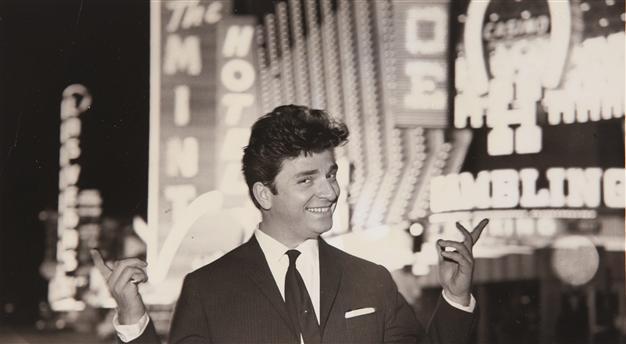Story of Turkey’s late music icon Zeki Müren on display
ISTANBUL

A new exhibition, organized in collaboration with Yapı Kredi Private Banking and the Yapı Kredi Culture and Arts Publication, is shedding light on the life of a Turkish classical music icon, the late singer Zeki Müren.
The exhibition in Istanbul, opened on Nov. 18, displays archive documents, accessories, costumes, poems and photos of Müren from his childhood until the time of his death.
The title of the exhibition, “İşte Benim Zeki Müren” (Here I am, Zeki Müren), is the same as one of the artist’s well-known songs.
The curator of the exhibition, Derya Bengi, said preparations for the exhibition took five months, and included gathering important documents and unseen photos of the artist to display. “Casino and film contracts, letters from his mother, his glasses and flamboyant costumes and boots are also among the items. There are many documents from [Müren’s] daily life,” said Bengi.
The exhibition items have been provided by the archive of the Turkish Education Foundation and the Turkish Armed Forces Mehmetçik Foundation, to which Müren donated all of his assets prior to his death.
Regarding the contribution to the exhibit by those foundations, Yapı Kredi Private Banking head of marketing and product management İmre Tüylü said visitors to the exhibition would have a chance to closely examine the extraordinary life of Müren, who is called the “Sun of Art.”
Yapı Kredi Culture and Arts Publication General Director Tülay Güngen said the frames selected for the exhibition were a witness to Müren’s stage and cinema works, as well as a window into his daily life.
“From the 1950s to the 1980s, this extraordinary star spent his life before millions of people. This exhibition is a rare opportunity to remember his very special place in Turkey’s popular culture,” she said.
Pioneering role in making homosexuality visibleMüren, who was born in the northwestern province of Bursa in 1931, died of a heart attack during a live performance on stage in İzmir in 1996. With his feminized dresses, large rings and heavy make-up, Müren played a pioneering role in increasing the visibility of homosexuality in Turkish society.
For nearly 20 years before his death, Müren lived in the Aegean town of Bodrum, where his presence had a great impact. His house in Bodrum was restored and opened to visitors by the Culture and Tourism Ministry in 2000. It is located in the Kumbahçe neighborhood of the town, on a street named after him.
The exhibition will continue through Dec. 20 at the Yapı Kredi Culture Center in Istanbul.
 A new exhibition, organized in collaboration with Yapı Kredi Private Banking and the Yapı Kredi Culture and Arts Publication, is shedding light on the life of a Turkish classical music icon, the late singer Zeki Müren.
A new exhibition, organized in collaboration with Yapı Kredi Private Banking and the Yapı Kredi Culture and Arts Publication, is shedding light on the life of a Turkish classical music icon, the late singer Zeki Müren.